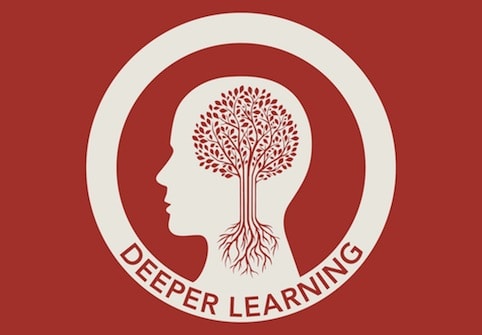Getting Smart Connects Digital Learning & Deeper Learning In Latest White Paper

‘How Digital Learning Contributes to Deeper Learning’ Offers a Deeper Learning Path to College & Career Readiness
 Seattle, Wash., December 12, 2012 – Getting Smart® today launches “How Digital Learning Contributes to Deeper Learning,” a white paper that examines how key aspects of personal digital learning – common standards, next-generation assessments, blended learning, and affordable devices – can provide deeper learning opportunities for students.
Seattle, Wash., December 12, 2012 – Getting Smart® today launches “How Digital Learning Contributes to Deeper Learning,” a white paper that examines how key aspects of personal digital learning – common standards, next-generation assessments, blended learning, and affordable devices – can provide deeper learning opportunities for students.
“Deeper Learning is what all young people need to succeed in a complex world, and digital learning is a powerful tool to help them get there. This report shows how,” said Bob Rothman, Senior Fellow at the Alliance for Excellent in Education (AEE), an organization that shares a commitment to the connection between technology and deeper learning.
The Hewlett Foundation suggests deeper learning prepares students to master core academic content, think critically, solve complex problems, work collaboratively, communicate effectively and learn how to learn. This paper builds upon that framework to connect to digital learning.
This paper identifies three primary ways that digital learning promotes deeper learning:
- Personalized skill building in preparation for deeper learning (e.g., adaptive learning in the Learning Lab at Rocketship Elementary);
- Schools and tools that foster deeper learning (e.g., project-based learning networks like New Tech); and
- Extended access (e.g., access to quality courses and teachers online).
To meet these deeper learning objectives, the paper outlines 10 recommended next steps for state, district, network, and philanthropic leaders:
- Common Core: Encourage more writing and explicit writing instruction.
- Science: Model instruction to match next-generation science standards.
- Good tests: Support quality PARCC and Smarter Balanced tests and sound implementation.
- Coherent state policy: Build upon frameworks such a s Digital Learning Now! 10 elements for high-quality digital learning.
- Intellectual mission: Support statewide authorization of deeper learning networks.
- Extended reach: Support school models that use technology to leverage great teaching.
- Deep, not shallow, blends: Provide incentives for school models that promote deeper learning.
- Deeper learning platforms: Sponsor the development and adoption of platforms that promote deeper learning.
- Leadership development: Support individual and cohort learning experiences for leaders.
- Convene: Collaborate in person and online to share resources and form networks.
Tom Vander Ark, Executive Editor of Getting Smart, said, “The adoption of college- and career-ready standards—and the coordination of next-generation assessments—create an unprecedented national opportunity to advance readiness that can be realized by linking digital learning and deeper learning.”
Carri Schneider, Director of Policy and Research at Getting Smart, noted “Great teachers know how to create deeper learning opportunities for students. With technology that allows for personal digital learning, schools and districts can finally promote deeper learning at scale.”
Learn more and download the full white paper at gettingsmart.com/about/resources. Join the conversation at gettingsmart.com, on Facebook at at facebook.com/gettingsmart, and on Twitter at @Getting_Smart.





0 Comments
Leave a Comment
Your email address will not be published. All fields are required.